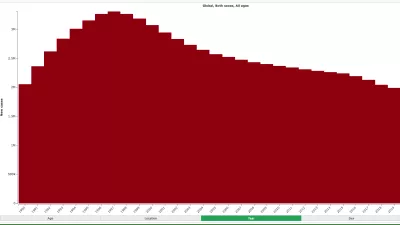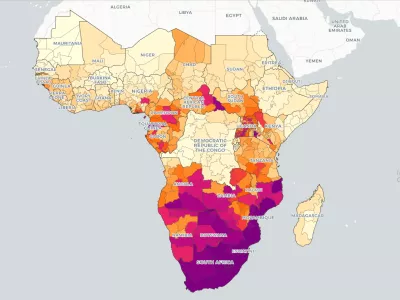HIV/AIDS
HIV (human immunodeficiency virus) is a virus that attacks the body’s immune system. If HIV is not treated, it can lead to AIDS (acquired immunodeficiency syndrome).
Photo by Kevin Lamarque, Reuters.
Key findings
The overall HIV infection rate has been falling globally, in part thanks to intervention techniques.
Some examples of successful interventions for HIV include:
- Antiretroviral therapy (ART)
- Prophylaxis
- Prevention of vertical (mother-to-child) transmission
Over the past 20 years, HIV has become a manageable chronic illness for people who can be tested and treated. There are still significant inequities in access to care across the globe, which must be addressed.

Although global deaths from HIV/AIDS reached their peak in 2004, nearly 37 million people are living with HIV worldwide.
As of 2019, sub-Saharan Africa is the region most disproportionately affected by HIV/AIDS, accounting for
- 74.0% of global HIV-related deaths at just over 26 million prevalent cases.
- 64.9% of new HIV infections at nearly 1.3 million new infections.
Women in the region carry the majority of the burden with 63% of prevalent cases in 2019.

Development assistance for health (DAH) funding for HIV/AIDS was $9.9 billion in 2021.
- About 20% of total 2021 DAH went to combating HIV/AIDS.
- The largest sources of DAH for HIV/AIDS in 2021 were the United States and the United Kingdom.
- DAH made up less than half of the total funds spent on HIV/AIDS in 2017.

Sub-Saharan Africa is disproportionately affected by HIV/AIDS.
Billions of dollars are spent every year to fight HIV/AIDS in low-income countries. We track funding for interventions globally through our Financing Global Health work.

Which countries are most affected by HIV/AIDS?
Cases of HIV/AIDS are particularly concentrated in the southern Africa region. Mozambique, Lesotho, South Africa, and Eswatini all experienced 600+ new cases per 100,000 people in 2019.
The most deaths attributable to HIV/AIDS are also largely concentrated in this region. Lesotho had 581 deaths per 100,000 people in 2019, nearly double Mozambique’s rate of death from HIV/AIDS.
However, when comparing the rate of change from 2014 to 2019, new HIV/AIDS cases decreased sharply for nearly all of sub-Saharan Africa, while areas of Europe and Asia showed increases. These include:
- Western Europe: Spain (8.91% growth from 2014) and Portugal (3.92%)
- Central and Eastern Europe: Hungary (6.92%), Ukraine (10.53%), Belarus (6.64%), and Latvia (7.77%)
- Central and Southeast Asia: Kazakhstan (9.24%), Turkmenistan (4.92%), Kyrgyzstan (10.97%), and the Philippines (10.03%)